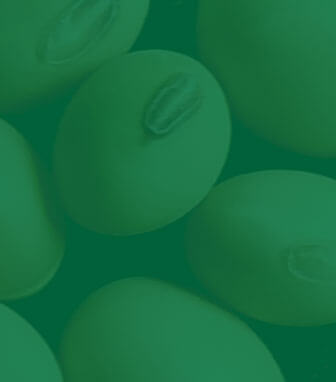

The following table provides the most recent soybean supply and use information published by the U.S. Department of Agriculture. While the 2016 soybean crop is still subject to some change based on the harvest, there are trends. Average soybean yields and total production are at an all-time high resulting in more soybeans being available for crush and/or export. Soybean yields are estimated at 50.6 bushels per acre which supports a total soybean production value of 4,201 million bushels. The increased domestic soybean meal production increases the volume of soybean meal available for use by the feed industry and for export sales. The 2016/17 projected values for acres harvested, soybean yield, total production and soybean meal use are impressive.
The objective of this High-Oleic Soybean Use by Dairy Cows study was to investigate the effect of three soybean sources differing in fatty acid profile and processing method on productivity, milk composition, and enteric CH4 emission in lactating dairy cows. The soybean sources were: extruded conventional soybean meal (SBM; 48% CP and 8.7% ether extract; 22% oleic acid), extruded Plenish® (DuPont Pioneer, Johnston, IA), a high-oleic acid variety SBM (51.4% and 8.4%, respectively; 75% oleic acid), and whole, heated Plenish® soybeans (40.0% and 20.2%, respectively). The study involved 15 Holstein cows in a replicated 3 × 3 Latin square design experiment with 3, 28-day periods. The inclusion rate of the three soybean sources in the diet was (all data are on DM basis): 17.1, 17.1, and 7.4%, diets CESBM, PESBM, and WHPSB, respectively, providing 1.4 to 1.5% soybean oil. The rest of the dietary ingredients were: corn silage, 41%; alfalfa haylage, 16%; grass hay/straw mix, 4%; ground corn grain, 10%; cottonseed hulls, 4%; molasses, 4.9%; and a mineral/ vitamin premix, 3%.
The results indicated that compared with the conventional extruded soybean meal treatment, the Plenish® diets tended to increase (P = 0.09) DMI (27.1, 27.8, and 27.8 kg/d, CESBM, PESBM, and WHPSB, respectively). Milk yield was not affected (P= 0.10) by treatment (average of 42.2 kg/d). The Plenish® diets increased (P <0.01) milk fat content (3.55, 3.74, and 3.76%) and decreased feed efficiency (P <0.001) compared with CESBM (1.50 and 1.51 vs. 1.57 kg/kg, respectively). Treatments had no effect (P= 0.13) on enteric CH4 (average of 463 g/d, SEM = 29.7) or CO2 (average of 12,113 g/d, SEM = 241.5) emissions and methane emission yield (16.6 to 17.2 g/kg DMI).
The diets had a marked effect on milk fatty acid profile. Generally, the Plenish® diets increased (P < 0.01) mono-unsaturated and cis-9 18:1 and decreased (P<£ 0.01) poly-unsaturated, total trans-, and conjugated linoleic fatty acids concentrations in milk fat.
To summarize, compared with conventional extruded SBM, the Plenish® soybean treatments had no effect on milk yield, increased milk fat concentration, decreased feed efficiency, and modified milk fatty acid profile in a manner expected from the greater concentration of oleic acid in Plenish® soybean oil.